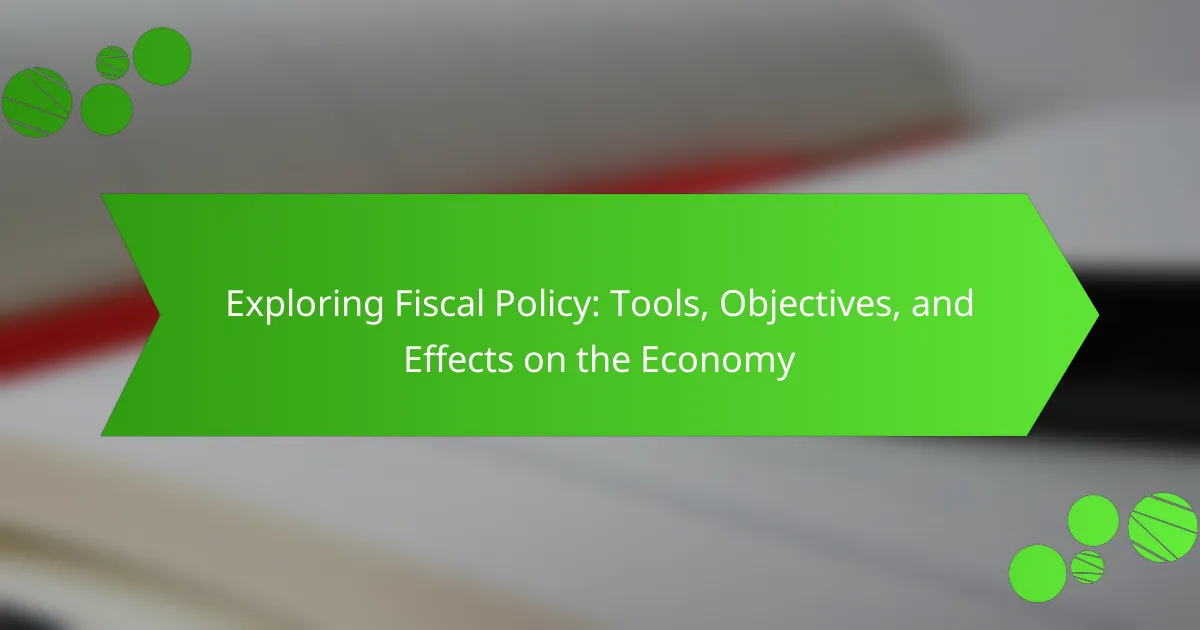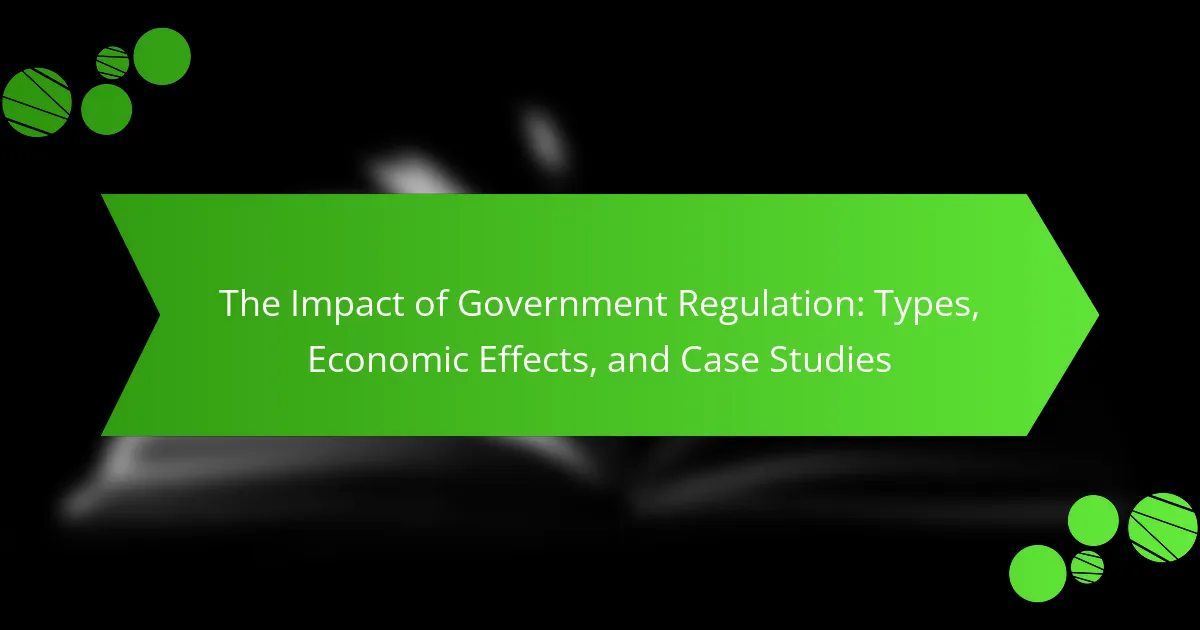Incentives are rewards or penalties that influence the behavior of individuals and organizations, significantly impacting economic decisions and market outcomes. This article explores the various types of incentives, including financial rewards like bonuses and taxes, as well as non-financial motivators such as social recognition. It examines how incentives drive specific actions, supported by case studies such as the “Nudge” initiative in the UK, the “Pay for Performance” model in U.S. healthcare, and California’s “Green Incentives” program. The effectiveness of incentives is analyzed through economic theories and real-world examples, highlighting their role in shaping consumer choices and organizational behavior.

What are Incentives in Economics?
Incentives in economics are rewards or penalties that influence the behavior of individuals and organizations. They can be financial, such as bonuses or taxes, or non-financial, like social recognition. Incentives motivate people to take specific actions or make decisions. For example, a tax break may encourage businesses to invest in new projects. Conversely, higher taxes on cigarettes aim to reduce smoking rates. Economic theories show that incentives significantly impact consumer choices and market outcomes. Studies by economists like Gary Becker highlight how incentives shape decisions in various contexts.
How do incentives influence economic behavior?
Incentives significantly influence economic behavior by motivating individuals to make specific choices. They can be categorized into positive and negative incentives. Positive incentives encourage behavior through rewards, such as bonuses or tax breaks. Negative incentives deter behavior by imposing costs, like fines or taxes.
For example, a study by the National Bureau of Economic Research found that financial incentives can increase productivity among workers. Additionally, behavioral economics shows that people respond to incentives in predictable ways. This response can be observed in consumer purchasing decisions influenced by discounts or promotions.
Overall, incentives shape economic behavior by altering the cost-benefit analysis individuals perform when making decisions.
What are the different forms of incentives in economics?
In economics, incentives are categorized into three main forms: positive incentives, negative incentives, and intrinsic incentives. Positive incentives encourage behaviors by providing rewards or benefits. For example, tax breaks for businesses stimulate investment. Negative incentives deter undesirable actions by imposing costs or penalties. An example is fines for pollution, which discourage environmental harm. Intrinsic incentives motivate individuals through personal satisfaction or fulfillment. This can be seen in volunteer work, where individuals gain a sense of purpose. Each form of incentive influences decision-making and behavior in economic contexts.
Why are incentives crucial for decision-making in economics?
Incentives are crucial for decision-making in economics because they influence the choices individuals and organizations make. They serve as motivators that can lead to specific behaviors. Positive incentives encourage actions that yield benefits, while negative incentives deter undesirable behaviors. For instance, financial rewards can drive productivity in the workplace. Conversely, taxes can discourage excessive consumption of harmful products.
Research indicates that incentives shape consumer behavior significantly. A study by Gneezy and Rustichini (2000) demonstrated how monetary incentives can increase performance in various tasks. This shows that the structure of incentives directly impacts economic outcomes. Therefore, understanding incentives is essential for predicting and influencing economic behavior.
What types of incentives exist in economic theory?
In economic theory, there are three main types of incentives: positive incentives, negative incentives, and intrinsic incentives. Positive incentives encourage behavior through rewards or benefits. For example, financial bonuses motivate employees to increase productivity. Negative incentives, on the other hand, discourage behavior through penalties or costs. An example is taxes that reduce consumption of harmful products. Intrinsic incentives are driven by personal satisfaction or internal rewards. An example is an individual pursuing a hobby they enjoy, which provides fulfillment. These types of incentives shape decision-making and behavior in economic contexts.
What are monetary incentives and how do they work?
Monetary incentives are financial rewards designed to motivate specific behaviors or actions. They work by providing tangible benefits, such as bonuses or pay raises, to encourage individuals to achieve certain goals. For example, companies often use performance bonuses to enhance employee productivity. Research shows that monetary incentives can effectively increase motivation and performance levels. A study by Eisenberger and Cameron (1996) found that rewards can enhance intrinsic motivation when aligned with personal goals. Therefore, monetary incentives serve as powerful tools in economic behavior to drive desired outcomes.
What are non-monetary incentives and their implications?
Non-monetary incentives are rewards that do not involve direct financial compensation. These incentives can include recognition, praise, flexible work schedules, and opportunities for professional development. They aim to motivate individuals by fulfilling psychological and emotional needs. Non-monetary incentives can improve job satisfaction and employee engagement. Research shows that companies utilizing these incentives often experience higher productivity levels. For example, a study by the Society for Human Resource Management found that recognition programs significantly boost employee morale. These implications highlight the importance of addressing intrinsic motivations alongside extrinsic rewards in organizational settings.
How do intrinsic and extrinsic incentives differ?
Intrinsic incentives are motivations that come from within an individual. They are driven by personal satisfaction or enjoyment in performing a task. For example, a person may engage in a hobby simply because they find it fulfilling. Extrinsic incentives, on the other hand, are external rewards given for specific behaviors. These can include money, praise, or other tangible benefits. A common example is working overtime to receive a bonus. Research shows that intrinsic incentives can lead to higher levels of creativity and persistence. In contrast, extrinsic incentives can sometimes undermine intrinsic motivation if overused. For instance, a study by Deci, Koestner, and Ryan in 1999 found that extrinsic rewards can diminish intrinsic motivation for tasks that are inherently enjoyable.

How do Incentives Affect Behavior?
Incentives significantly influence behavior by motivating individuals to take specific actions. They can be financial, such as bonuses or discounts, or non-financial, like recognition or social approval. Incentives create a framework that aligns individual actions with desired outcomes. For example, a study by Deci, Koestner, and Ryan in 1999 showed that monetary rewards can enhance performance in tasks that require cognitive engagement. Conversely, inappropriate incentives can lead to negative behaviors, such as cheating or risk-taking. The effectiveness of incentives also depends on individual preferences and values. Therefore, understanding the type and structure of incentives is crucial for shaping behavior effectively.
What psychological principles underlie the effects of incentives?
Incentives are influenced by several psychological principles. One key principle is the principle of reinforcement. This principle suggests that behaviors followed by positive outcomes are more likely to be repeated. Research shows that rewards can effectively increase desired behaviors. Another principle is the expectancy theory. This theory posits that individuals are motivated to act based on expected outcomes. The perceived value of the incentive affects motivation levels. Additionally, the principle of loss aversion plays a significant role. People tend to prefer avoiding losses rather than acquiring equivalent gains. This can make negative incentives effective in driving behavior. Lastly, social comparison theory indicates that individuals are motivated by the behaviors and rewards of others. Observing peers receiving incentives can enhance motivation to achieve similar rewards. These principles collectively explain how incentives can influence behavior in various contexts.
How do incentives shape consumer choices?
Incentives significantly influence consumer choices by altering motivations and behaviors. They can be monetary, such as discounts or rebates, or non-monetary, like loyalty points or social recognition. Monetary incentives often lead to immediate changes in purchasing behavior. For example, a study by the National Bureau of Economic Research found that price reductions can increase sales by up to 50%. Non-monetary incentives can enhance brand loyalty and encourage repeat purchases. Research from Harvard Business School shows that consumers are more likely to choose brands that offer rewards programs. Overall, incentives effectively guide consumer decision-making by making certain options more appealing.
What role do incentives play in employee motivation?
Incentives play a crucial role in employee motivation by providing tangible rewards for achieving specific goals. They can be financial, such as bonuses or salary increases, or non-financial, like recognition and career advancement opportunities. These incentives encourage employees to perform at their best and align their efforts with organizational objectives. Research shows that 65% of employees are motivated by financial incentives, according to a study by the Incentive Research Foundation. Additionally, non-monetary incentives can enhance job satisfaction and engagement, leading to higher productivity levels. By effectively implementing incentives, organizations can foster a motivated workforce that drives overall success.
Why is understanding incentives important for policymakers?
Understanding incentives is crucial for policymakers because they shape behavior and decision-making. Policymakers design regulations and programs based on how people respond to incentives. Effective incentives can drive positive outcomes, such as increased public health or economic growth. For instance, tax breaks for renewable energy encourage businesses to invest in sustainable practices. Conversely, poorly structured incentives can lead to unintended consequences, such as overconsumption or exploitation of resources. Research shows that well-aligned incentives can improve compliance and participation in government programs. Therefore, understanding incentives helps policymakers craft effective strategies that align individual motivations with societal goals.
How can incentives be used to drive social change?
Incentives can effectively drive social change by motivating individuals to alter their behaviors. Financial incentives, such as subsidies or tax breaks, encourage environmentally friendly practices. For instance, studies show that tax credits for solar panel installation increase adoption rates. Non-monetary incentives, like recognition programs, can also promote community involvement. Research indicates that awards for volunteerism boost participation in social initiatives. Behavioral nudges, such as reminders or default options, can guide individuals toward desired actions. Evidence from various studies demonstrates that these strategies lead to significant shifts in public behavior. Overall, structured incentives create pathways for individuals to contribute positively to societal goals.
What are the potential unintended consequences of incentives?
Incentives can lead to unintended consequences that may undermine their intended goals. One consequence is the potential for individuals to engage in unethical behavior to achieve the incentive. For example, performance bonuses can encourage employees to cut corners or manipulate results. Another consequence is that incentives may create dependency, where individuals rely on rewards instead of intrinsic motivation. This can reduce long-term engagement and creativity. Additionally, incentives can distort priorities, causing individuals to focus on measurable outcomes at the expense of other important factors. Research has shown that overly narrow incentives can lead to negative externalities, such as environmental degradation when companies prioritize profit over sustainability. Furthermore, incentives can exacerbate inequality if they disproportionately benefit certain groups over others. These unintended consequences highlight the complexity of designing effective incentive systems.

What are Real-World Case Studies on Incentives?
Real-world case studies on incentives demonstrate their effectiveness in influencing behavior. One notable example is the “Nudge” initiative in the UK. This program used behavioral insights to encourage healthier eating habits among citizens. By placing healthier food options at eye level in stores, the initiative increased the sales of fruits and vegetables by 10%.
Another case study is the “Pay for Performance” model in healthcare. Hospitals in the U.S. adopted this model to improve patient outcomes. Research showed that hospitals implementing this model saw a 15% reduction in readmission rates.
Additionally, the “Green Incentives” program in California incentivized homeowners to install solar panels. This initiative led to a 50% increase in solar installations within two years.
These examples illustrate how targeted incentives can effectively drive desired behaviors across various sectors.
How have incentives been applied in various industries?
Incentives have been applied across various industries to drive performance and influence behavior. In the healthcare industry, financial incentives encourage providers to improve patient outcomes. For example, Medicare offers bonuses for hospitals that meet quality care metrics. In the retail sector, sales incentives motivate employees to increase sales volume. Companies often use commission structures to reward top performers. In the technology industry, stock options serve as incentives to retain talent and align employee interests with company performance. Research shows that organizations with incentive programs see higher employee engagement and productivity. In education, performance-based pay for teachers aims to enhance student achievement. Studies indicate that such incentives can lead to improved test scores. Overall, incentives play a crucial role in shaping behaviors and achieving desired outcomes across diverse sectors.
What lessons can be learned from successful incentive programs?
Successful incentive programs demonstrate the importance of aligning incentives with desired behaviors. They show that clearly defined goals lead to better outcomes. Programs that provide immediate rewards are often more effective than delayed ones. Successful initiatives also highlight the value of personalization in incentives. Tailoring rewards to individual preferences increases engagement. Data from the Harvard Business Review indicates that companies with effective incentive programs see a 20% increase in employee productivity. Additionally, continuous feedback and adjustments enhance program effectiveness. Case studies reveal that transparency in incentive structures builds trust and commitment among participants.
How have failed incentive programs shaped current practices?
Failed incentive programs have significantly influenced current practices in various sectors. They have highlighted the importance of aligning incentives with desired outcomes. For instance, programs that did not consider participant motivations often led to disengagement and minimal results. The failure of these programs has prompted organizations to adopt more comprehensive evaluation methods. Research shows that understanding behavioral economics can enhance the effectiveness of incentive structures. Additionally, lessons from past failures have led to more targeted and flexible incentive designs. This evolution aims to improve participation rates and outcomes in future initiatives. Overall, the analysis of failed incentive programs has driven innovation in how incentives are structured and implemented.
What are the best practices for designing effective incentives?
Effective incentives should be clear, attainable, and aligned with desired behaviors. Clarity ensures that individuals understand what is expected to achieve the incentive. Attainability is crucial; incentives should be realistic to motivate participation. Alignment with desired behaviors means that incentives should encourage actions that support organizational goals.
Additionally, incentives should be timely. Providing rewards soon after the desired behavior reinforces the connection between action and reward. Variety in incentives can also enhance effectiveness. Different individuals may respond better to different types of incentives, such as monetary rewards, recognition, or additional responsibilities.
Lastly, regular evaluation of incentive programs is necessary. This ensures they remain relevant and effective in achieving their goals. Research shows that well-designed incentives can significantly boost performance and engagement, as indicated in studies like “The Effects of Incentives on Performance” by Deci, Koestner, and Ryan.
How can organizations measure the impact of their incentive systems?
Organizations can measure the impact of their incentive systems through various quantitative and qualitative methods. They can analyze performance metrics before and after implementing incentives. This includes tracking sales figures, productivity rates, or employee retention statistics. Surveys and feedback from employees can provide insights into motivation and satisfaction levels. Additionally, organizations can conduct control group studies to compare outcomes between incentivized and non-incentivized employees. Data analytics tools can help in assessing the correlation between incentive structures and performance outcomes. Research indicates that organizations that systematically measure these impacts tend to see a 20% increase in employee engagement and productivity.
What common pitfalls should be avoided when implementing incentives?
Common pitfalls to avoid when implementing incentives include misalignment with goals, lack of clarity, and unintended consequences. Misalignment occurs when incentives do not support the overall objectives of the organization. This can lead to efforts that do not drive desired outcomes. Lack of clarity can confuse employees about what behaviors are being rewarded. This confusion can result in frustration and disengagement. Unintended consequences may arise when incentives encourage negative behaviors, such as gaming the system or neglecting other important tasks. Research shows that poorly designed incentive systems can lead to decreased motivation and productivity. Therefore, careful planning and alignment with organizational goals are crucial for effective incentive implementation.
The main entity of the article is incentives in economics, which are rewards or penalties that influence the behavior of individuals and organizations. The article explores the types of incentives, including positive, negative, and intrinsic incentives, and their effects on economic behavior and decision-making. It discusses the psychological principles underlying incentives, their role in shaping consumer choices and employee motivation, and the importance of understanding incentives for policymakers. Additionally, real-world case studies illustrate the application of incentives across various industries, highlighting best practices for designing effective incentive systems and potential pitfalls to avoid.



